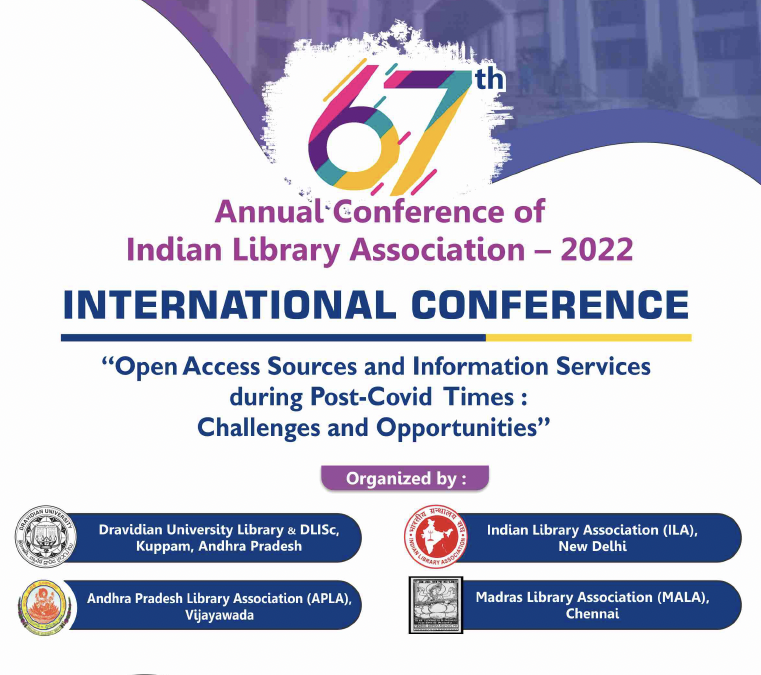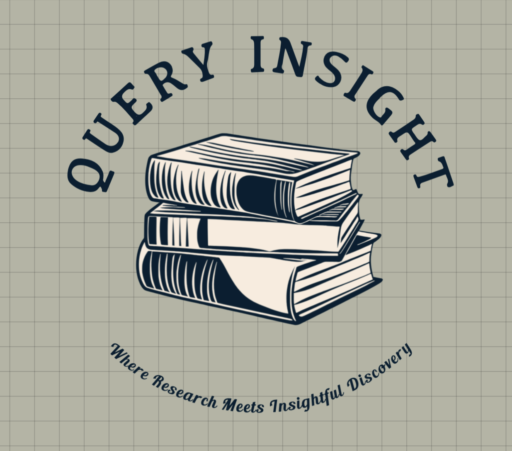
Title of the paper-
An Affirmative Approach of Evaluating Open Access Repositories in India
Published in Conference Proceedings of ILA 2022 Conference
Abstract-
The aim of the study is to find out the impact of Open Access Repositories (OAR) enlisted in Directory of Open Access Repositories (OpenDOAR) and Registry of Open Access Repositories (ROAR) with a comparative analysis of both the authoritative resources. For this study a total of 35 OARs enlisted in OpenDOAR out of which 24 is also registered in ROAR is selected for analysis by Web analytics tool Nibbler to evaluate the performances of the websites. “Ranking Web of World Repositories” (RWWR) ranking with its’ search and retrieval strategies are also taken in consideration for this study. The findings revealed that OpenDOAR and ROAR has their own pros and cons in aggregating data on Open Access Repositories. Although OpenDOAR claims that the listing of repositories in its directory are ‘carefully reviewed and processed by a member of our editorial teams’ but during this study it was found out that the claim is inaccurate in terms of URL specification, functionality and so on. ROAR registry includes a pool of features out of which some are malfunctional. However, ROAR has certain advantages over OpenDOAR, such as export facility, geographical identifiers (latitude and longitude) and total record count of the OARs.
Additional analytics using Nibbler showed that the best performing OAR was ‘Knowledge Repository of Indian Institute of Horticultural Research’ among the 35 studied and INFLIBNET is at top of the popularity rank. This paper may help the administrators of the websites to improve the performance of the repositories and tries to draw the attention of the users to the advantages and drawbacks of OpenDOAR and ROAR.

Title of the Paper-
Managerial Cores in Open Science: Interpreting ‘Open’ With Library and Information Science
Published in Conference Proceedings of CALIBER 2022 Conference
Abstract-
Open Science promotes scholarly communications through collaborations between societal agents by sharing information that is accessible and reusable for everyone. The benefit of science and society promotes transparent and reproducible open knowledge creation and engagement of societal actors to enhance scientific knowledge. This study focuses on the core concepts of Open Science and Library and Information Science discipline to delineate a relational association between the two. This study also tries identifying the motivational traits in Library Management and Open Science by interpreting Maslow’s Need Theory and Schwartz’s Value Theory. Lastly, this study traces technology acceptance by library professionals with the elaboration of the Technology Acceptance Model given by Davis. Libraries provide open access and sharing of resources, information storage and retrieval, data handling and research data management, and guide researchers on open access publishing, open licensing, and others. In the proposed Technology Acceptance model conceived by the authors, the external factors actively or passively influence the attitude and behaviors of library professionals to use technology and systems for promoting Open Science initiatives and practices.

Title of the paper-
Published in Conference Proceedings of ETD 2023 Conference
Abstract –
Good metadata quality makes a record more discoverable, facilitating search and retrieval. In this study, three methods are used to determine the quality of metadata of Electronic Theses and Dissertations; these are – Marc Report Analysis of Metadata, Metadata Quality parameters suggested by data.europa.eu, and lastly, a java based pre-compiled program by Peter Király has been used in this study. This study provides a brief comparative account of Electronic Theses and Dissertation Metadata structure of Institutional Repositories and Libraries. The comparative analysis of each repository shows that the total number of the record count is much higher in the case of the libraries as it was downloaded using z39.50/ SRU client. In contrast, in the case of repositories, only four sets of data are harvested using OAI-PMH. The field 040$e=rda is absent throughout the records of the institutional repositories. However, the field is present in a few records of the library, i.e., the University of Colorado shows 930 occurrences out of 1000 records. The process of metadata quality analysis involves a combination of automated tools and human expertise, ensuring a comprehensive evaluation of metadata attributes and relationships.

Title of the paper-
Published in Conference Proceedings of NDLI 2023 Symposium
Abstract-
Semantic coupling refers to betweenness among documents having the same textual context. Various AI tools are available for identifying semantically correlated texts for literary warrant grouping. Semantic similarity measures the quantitative distance between two documents in account of likeness. This paper is broadly divided into three segments: firstly, individual document similarity using sentence embedding; second, to identify document pair similarity; and lastly, using Doc2Vec algorithm relevant document identification and retrieval of top k documents matching the query from a document corpus. The highest similarity between sentence pairs from every document is nearly 1, the highest matching between a document pair is 0.798823833, and the least matching is 0.003227258. Lastly, most of the document’s similarity ranges between 0.2 to 0. The paper analysed the semantic coupling of documents and their granular components for validation in identifying related documents required for Systematic Literature Review (SLR). This model will help identify correlated texts that may extend possibilities of systematic literature review (SLR) more broadly if the model is implemented through a web interface like AsReview, etc.
